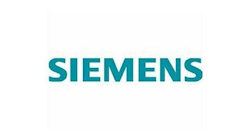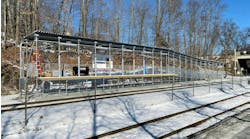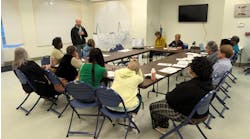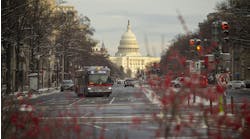High-Speed Rail Around the World
At the US High Speed Rail Association’s High Speed Rail Conference: Bringing High-Speed Rail to America, the session, “High-Speed Rail Around the World” had representatives from around the world to share best practices and lessons learned from other countries.
UIC Director General Jean-Pierre Loubinoux by pre-recorded video talked about Washington Day it held around the time of the UIC World Congress on High-Speed Rail in Philadelphia, Pa., this summer. There were a series of exchanges between American politicians and rail leaders from across the globe which created a new milestone in the efforts to promote and illustrate the benefits of HSR.
Siemens Industry Inc. Director, HSR Development Mobility Division, Armin Kick said this is all about getting people and goods transported faster between city centers. “If you can cut out an hour in the commute, something happens in the mode split.” He added, “We see it happen everywhere.”
To make HSR affordable, Kick said you don’t have to do everything new. Existing lines can be used to get into the city centers. Making it more affordable makes it much more realistic in the eye of the public. He stated, “Yes, HSR is very expensive, but the benefits that come from it can be very large.”
Kick also talked about the ETCS system in Europe. The one train control system affords trains the ability to cross borders seamlessly and the idea is that the system will replace all the other 22 systems that were out there. “It wasn’t efficient to weigh down a train set with seven or eight systems on board.”
One of the rules of this is that it would all be open sourced and you can download it on the Internet in some 14 languages. This has created an opportunity for ETCS worldwide as the companies that invested at the time to supply Europe, they now have a global market because a lot of other folks are looking for train control. And, they’re looking at this system because it’s open sourced and can be applied to their system. And with multiple global providers available, there are options to choose from.
When it comes to delays on the runways, the amount of fuel that we are wasting is phenomenal, said The Louis Berger Group Technical Vice President Rail & Transit Vinay Mudholkar. He also talked the HSR being built in the Middle East.
“In the next 10 years, a lot of the oil will be used for desalination of water for drinking purposes, so they’re trying to decrease their energy demands for transportation purposes.”
He stressed, “The dynamics of transportation are going to be changing going forward.”
Building HSR in Saudia Arabia, it’s a harsh environment. Temperatures are extreme, going as high as 115 and as low as 2 degrees. The amount of sand he said they had to move was 30 percent more volume than the Great Wall of China.
Working on HSR in other countries, Mudholkar stressed you’re creating local jobs and global jobs. He said they had 10,000 people working in Saudi Arabia from all over the world. And, it created a new industry in that part of the world and now the rail industry is providing more jobs for Saudis.
As for U.S. involvement, some of the equipment being used was sent from the States. With excellent freight moving in the United States, they used American axle loadings. Mudholkar said they shipped about $100 million worth of locomotives from EMD from Chicago. “They are strong and can handle the hard desert environment.”
There was also about $150 million of track maintenance technology from U.S. products but as Mudholkar said, there’s just not a lot of national attention about it.
These projects create a stimulus to all the suppliers who supply equipment; it creates jobs in the machinery sector. Moving sand is like us moving snow in North America, he explained. “It was such a huge problem we had to design special equipment to move it. It can be done. We have good, smart manufacturers out there.”
When asked about the use of renewable energy for HSR, Mukholkar said in Saudi Arabia, there is plenty of sun. “I don’t think I saw clouds in 365 days.” There, they use solar for charging the batteries in remote places. Kick said Siemens has promoted a zero-emission HSR train system for California and it has a concept for the system. Kunz added that in the Netherlands, the rail system will be 100 percent wind power. He also said that in China, many of the stations have solar panels on the roof. “Rail and renewable energy are coming together,” he stated.
CHSRA Updates
California High-Speed Rail Authority Chairman Dan Richard spoke about what has been going on over the past year for CHSRA and answered some lingering questions about the project. He said, “We made a lot of progress in the last year, but we can’t forget the visionaries that put this idea forward first in California.” He added, “It’s our time now to implement those visions.”
The last time he spoke at a USHSR conference was in May in San Francisco, Calif. While there was some progress and they had a business plan to move them forward to implement the project, they didn’t have the people to deliver this project; they didn’t have a CEO, deputy CEO, chief engineer, or any head people to lead the people in the various regions. “There was a fear that we were going to push to get the money to move forward and there wouldn’t be anyone to deliver the project.”
Now, with Jeff Morales, former CEO of Caltrans, as CEO, he has moved quickly to fill out the senior ranks of the authority. Richard said, “We cannot tolerate a kind of Big Dig experience with the nation’s largest infrastructure project. This is a very sacred responsibility. We have to move forward and build this system right.”
An Integrated Transportation Network
The plan today is focused on integration, Richard said, which he also said is a fundamental shift in the thinking between last year and now. In the past, because they were excited about the technology, he said, they lost sight of the other meaning: what they’re doing in California.
While they expect the system to stand on its own financially once it’s built – and their bond holders demand that there’s no public subsidy – the system is very much one part of an integrated transportation network. It will be delivering passengers to other systems and those systems will deliver passengers to the HSR. Richard said, “We hope we will be dumping millions of passengers annually into their system in Union Station, and it’s the access point for passengers to come to us.
“It makes all the systems work better,” he reiterated. “It’s not just about building a fast choo choo; it’s about raising all boats.”
Choosing the Route
Ongoing questions about the route choice were raised and he acknowledged that it has become the train to nowhere, so people wanting to attack the project had an easy target. Though he was quick to point out, it’s not to nowhere, “It’s a very important part of our state.
“HSR is different than BART; it is not to serve within the communities, it is to connect our communities across the state.” He also said that the line is connecting the fastest growing region of the state with the most populous part of the state.
As for starting in California’s Central Valley, the primary reason is that it is the fastest-growing part of the state and today they have no right of way, no land there. The growth rate is about 9 percent a year so that is the essential place to start: before more development occurs, before they have to tear down more buildings.
He was also asked why the alignment goes up the peninsula as opposed to coming up the East Bay. Richard said they had to go back and look at court requirements. The law requires that the HSR train connect not to San Francisco, but to the Transbay Terminal, which is in San Francisco. “That is in the law. If you come through the East Bay, how do you come to San Francisco?”
The other requirement in the bond act is that it has to get to LA within 2 hours and 40 minutes. He said you either go down and around and split in San Jose, or you would have to cross the San Francisco Bay from Oakland. He stressed, “For legal, engineering and environmental reasons, we believe this is the right alignment.”
Project Management for California HSR
The last question related to project management and was questioning that there are some of the same folks working on this project that worked on the Big Dig. Richard said a lot of time was spent talking about the role of the board as a governing body and there had to be a clear communication about expectations.
There was also a finance and audit committee of the board to make sure it was not only complying with the law, but that the right things were being done. When the state auditor general came out with a report from things in 2010 that were stated and not completed, Richard said all of those things have now been accomplished. He added that six from the 2012 report have also been accomplished and they are on track to complete the last three.
“I’m taking responsibility for this,” Richard said. “This thing goes awry, it’s the board’s job to make sure Jeff and his team are doing their job.
“We know we are now the face of HSR in America. If we screw this up, we will set HSR in America back. If we do it well, we will propel it forward.”




